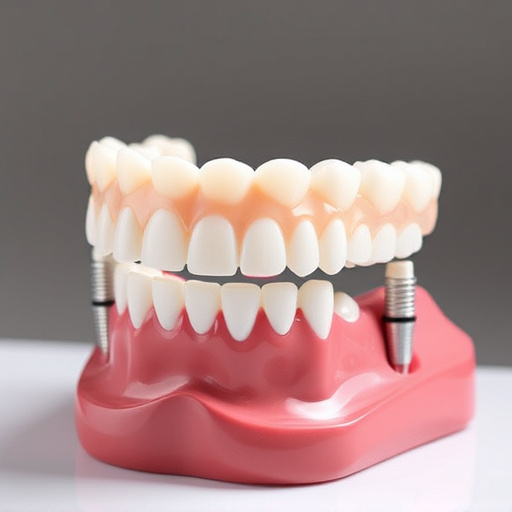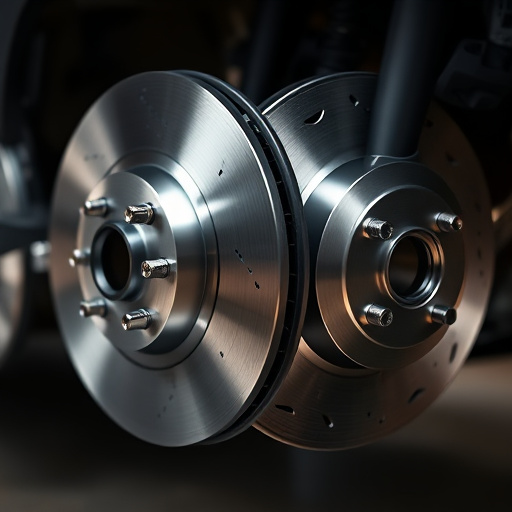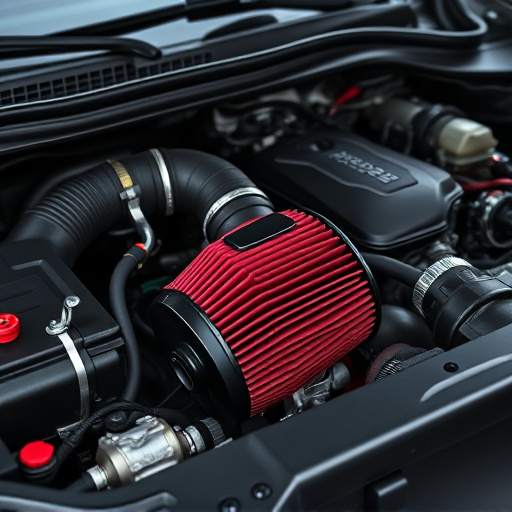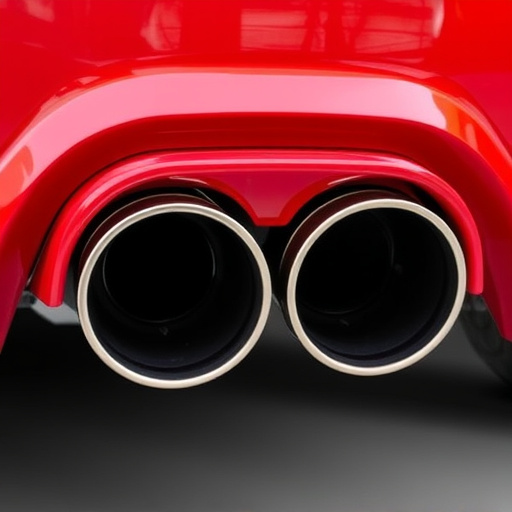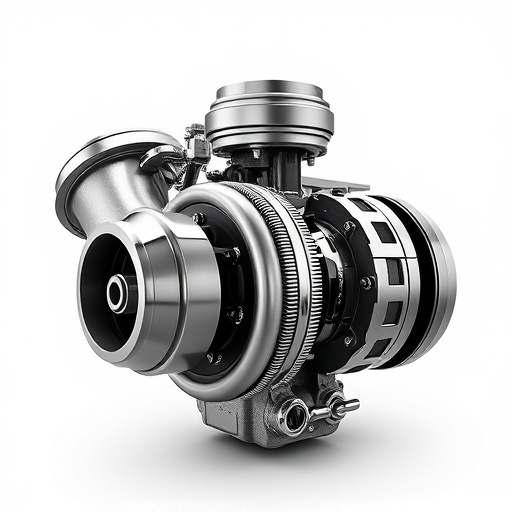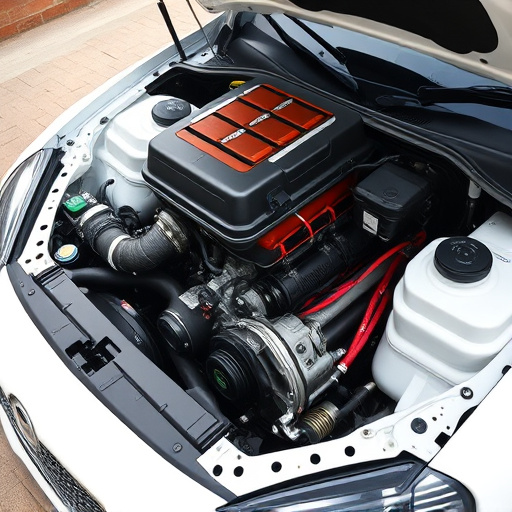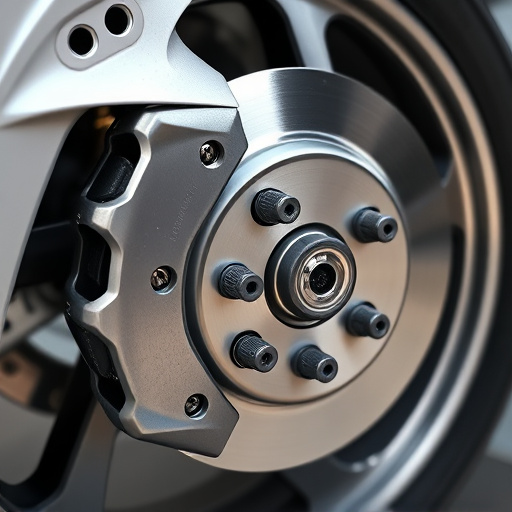The car suspension system, comprising springs, shock absorbers, and related components, is vital for wheel-to-chassis connection, ensuring smooth ride, stability, and driver comfort. Regular maintenance and upgrades, like coilover kits, significantly impact tire wear, safety, and performance by optimizing road contact with brake rotors. Tire wear patterns reveal suspension issues such as misalignment or worn parts, emphasizing the need for proactive maintenance to maximize tire lifespan and vehicle performance.
The car suspension system, a complex network of components, plays a pivotal role in vehicle performance and safety. By smoothing out road irregularities, it ensures a comfortable ride and enhances handling. However, its intricate design also influences tire wear patterns. This article delves into the fundamental workings of a car suspension system and explores how it directly impacts tire lifespan, shedding light on common wear causes along the way.
- Understanding Car Suspension System Basics
- Tire Wear Patterns and Their Causes
- The Direct Impact of Suspension on Tire Lifespan
Understanding Car Suspension System Basics
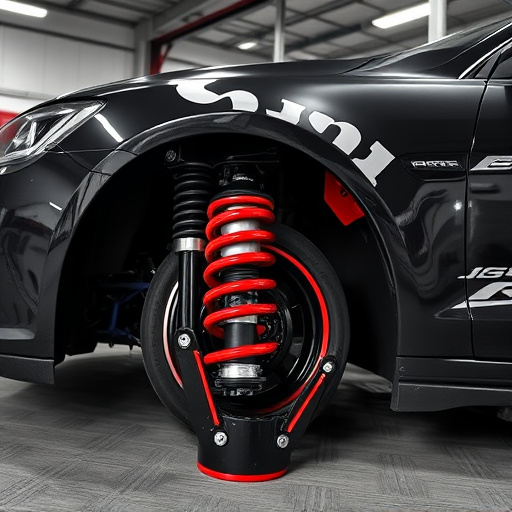
The car suspension system is a network of components designed to connect the vehicle’s wheels to its chassis, enabling smooth and controlled movement. It consists of several key elements like springs, shock absorbers (or struts), control arms, ball joints, and stabilizers bars that work together to absorb road imperfections, maintain vehicle stability, and ensure driver comfort. This system is vital for handling, traction, and overall driving experience.
Modern suspension systems often incorporate advanced technologies such as coilover kits, which offer precise height adjustment and enhanced performance. Properly maintaining and upgrading these components can significantly impact tire wear. For instance, improved suspension setups can reduce uneven tire tread wear by ensuring optimal contact with the road surface, thereby extending tire life and improving safety features like brake rotors’ effectiveness.
Tire Wear Patterns and Their Causes
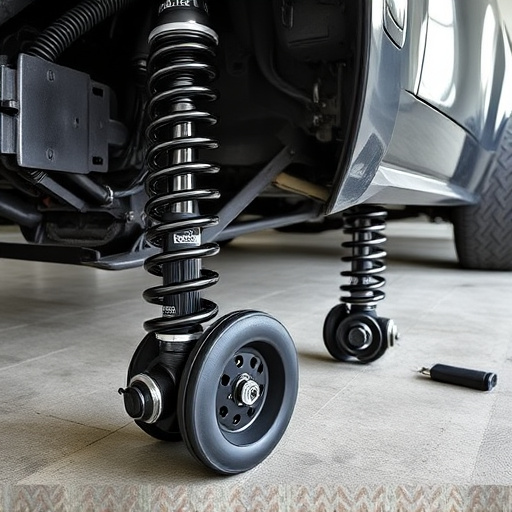
Tire wear patterns can offer valuable insights into a vehicle’s health, particularly when it comes to understanding the role of the car suspension system. Regular inspection reveals several common causes of tire degradation. One prominent pattern is uneven tire wear, often indicating misalignment or imbalance in the suspension components. For instance, outer tire edges wearing faster suggests suspension bushings or control arm bearings that need attention.
Additionally, rapid tire erosion on one side compared to the other could point to faulty alignment, poorly maintained high-performance parts, or even simple issues like worn brake pads causing uneven braking pressure. Recognizing these wear patterns is crucial for proactive maintenance, ensuring optimal tire lifespan and enhancing overall vehicle performance.
The Direct Impact of Suspension on Tire Lifespan
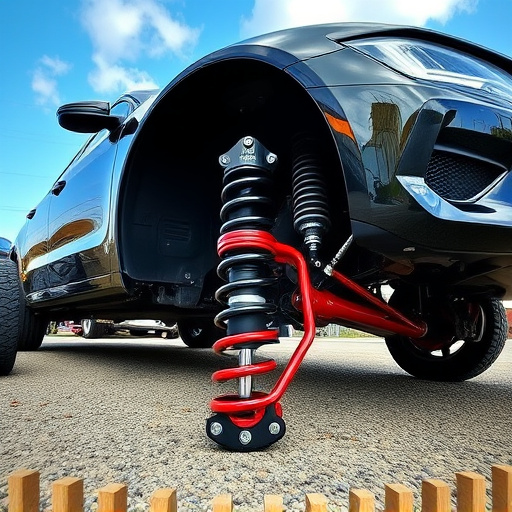
The car suspension system plays a pivotal role in determining the lifespan and health of tires. Poor suspension alignment or worn-out suspension components can lead to uneven tire wear, significantly reducing their longevity. When a vehicle’s suspension is not properly adjusted, it causes issues like misaligned wheels, which in turn results in inconsistent tire contact with the road surface. This imbalance places excessive strain on certain areas of each tire, accelerating wear and tear.
Additionally, components such as shocks and struts, when faulty or worn out, can negatively impact tire performance. For instance, old or improperly inflated shock absorbers reduce a tire’s ability to maintain proper contact during cornering, leading to accelerated tread degradation. Upgrading to high-quality coilover kits or installing a cat back exhaust system, known for its potential performance improvements, should also consider the suspension as a critical factor for optimal tire wear and road safety.
The relationship between a car’s suspension system and tire wear is undeniable. By understanding the fundamental principles of suspension design, recognizing common tire wear patterns, and acknowledging the direct correlation between suspension components and tire lifespan, drivers can make informed decisions to optimize their vehicle’s performance and extend tire life. Investing in regular maintenance and considering advanced suspension technologies can ensure a smoother ride, better handling, and reduced tire replacement costs over time.





